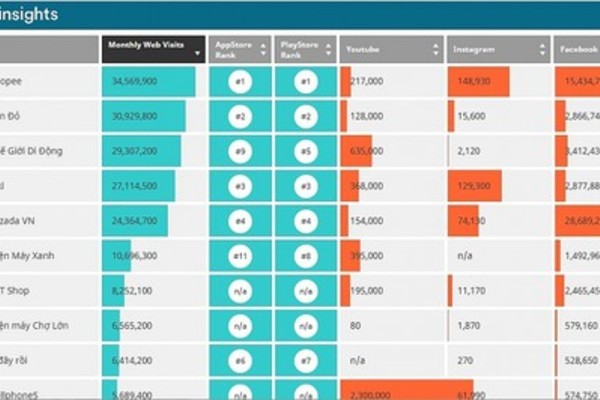The HCM City Industry and Trade Department and HCM City Economics University have reviewed the implementation of the project on developing e-commerce in HCMC by 2025.

The project’s researchers found that the e-commerce growth rate in Vietnam is 25 percent and the number of businesses in the field has increasef rapidly. The year 2018 witnessed z boom of e-commerce with impressive figures.
The total revenue of e-commerce firms in Vietnam in 2018 was $2.26 billion, an increase of 30 percent compared with 2018 and double that of 2015, with which Vietnam was added into the top six largest e-commerce markets in the world, just after China, the US, UK, Japan and Germany.
| E-commerce development is improving, but state management in this field is facing many difficulties because the legal framework cannot cover all e-commerce activities. |
In HCMC, there are 130,000 e-commerce websites, of which 9,000 websites have registered with the Ministry of Industry and Trade (8,519 sale websites and 391 websites providing e-commerce services).
HCMC continues to be one of the largest e-commerce markets in Vietnam. Online sales in the city account for 8.14 percent of total retail turnover and 40 percent of total e-commerce transaction value.
The researchers pointed out that state management in e-commerce now has to ‘run after’ e-commerce firms. According to Pham Thanh Kien, director of the HCMC Industry and Trade Department, e-commerce has been developing very rapidly, while the state management in the field is still fledgling.
According to the research team, HCMC has every condition to develop e-commerce. The city has the basic infrastructure for development of e-commerce. And the business growth of HCMC has prompted many businesses to invest in e-commerce.
Currently, the scale of e-commerce application in HCMC accounts for 60 percent of the whole country. As for sales solutions, businesses are shifting into multi-channel distribution and have begun integrating big data.
COD (cash on delivery) remains the major payment method in e-commerce, but fintech environment is changing e-commerce.
In addition, the economic development in HCMC, the building of smart city and the deployment of 5G infrastructure, will also contribute to the successful development of e-commerce.
Vu Quoc Tuan from Lazada commented that e-commerce development is soaring in mobile commerce as young people can quickly access m-commerce and have diverse purchasing demands.
In HCMC’s trade development strategy, the city will combine the development of both traditional trade and e-commerce. A question may be raised that if there will be a contradiction between e-commerce and traditional trade. The answer is ‘yes and no’. ‘Yes’ if the benefits of involved parties cannot be harmonized and ‘no’ if the coordination and operation are good.
Linh Ha

Multi-billion dollar capital flows to e-commerce in Vietnam
The multi-billion dollar capital flow which went to India and helped the country build decacorns (startups with value of over $10 billion) and unicorns (over $1 billion) in e-commerce, is now heading for Vietnam.

Lazada and Tiki fall further behind e-commerce competition
Despite non-stop spending, Lazada remains overwhelmed by local platforms Sendo and Mobile World, in addition to other players Shopee and Tiki.
 E-commerce development is improving, but state management in this field is facing many difficulties because the legal framework cannot cover all e-commerce activities.
E-commerce development is improving, but state management in this field is facing many difficulties because the legal framework cannot cover all e-commerce activities.